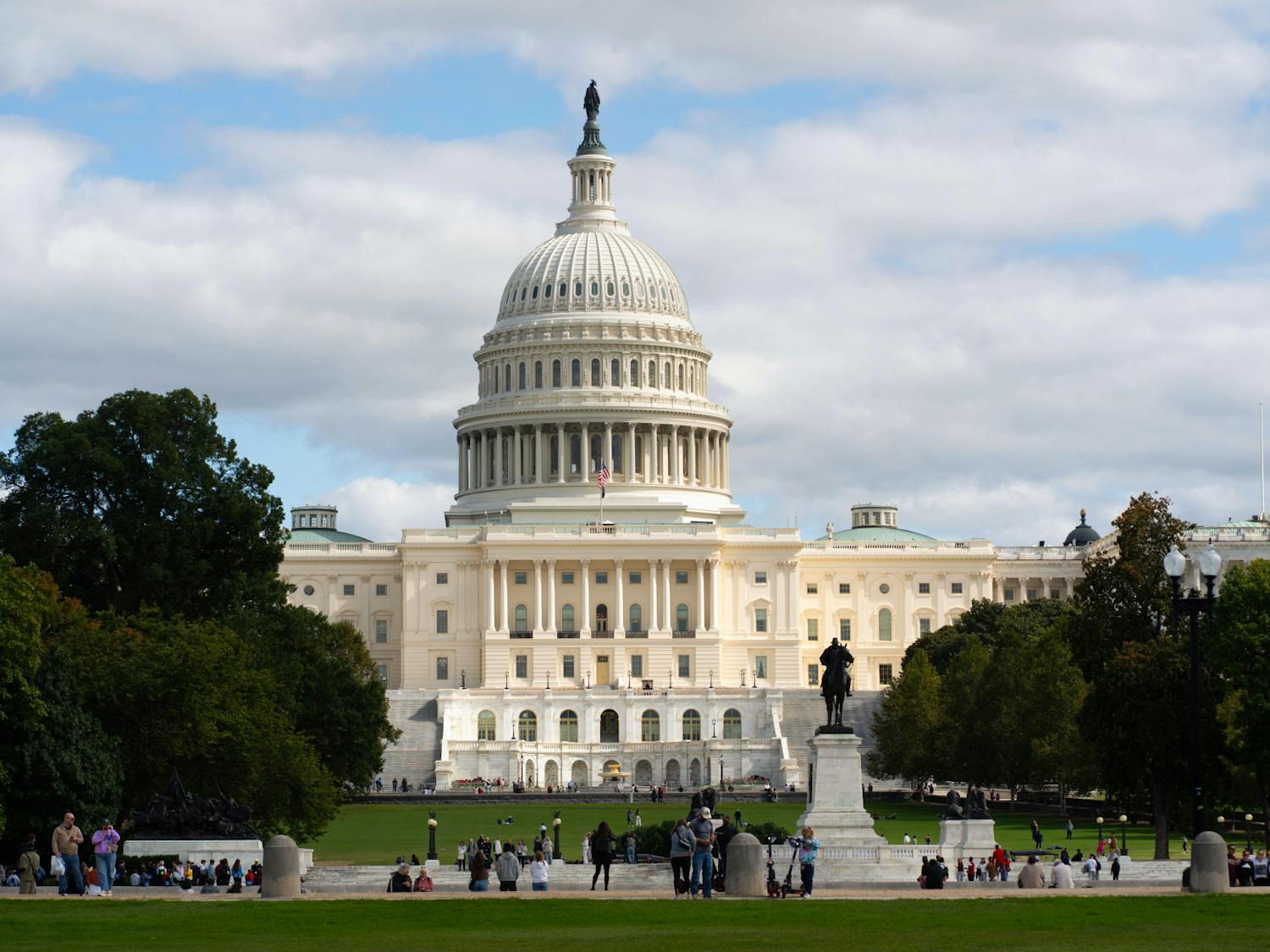W h en the ARCH building reopened this year, a small pane of stained glass sparked a controversy. The building was the former home of the Christian Student Association and contains 15 glass coats of arms representing international missionary destinations for the CSA. The one in question portrays the Rising Sun Flag, Japan’s military flag. Originally a symbol of good fortune, the flag has come to be associated with Japanese imperialism and conquest in South Korea and China. Obscured by construction barriers for years, the sudden reintroduction of the symbol to Locust Walk understandably caused quite a stir among Penn’s Korean students.
The online debate was infused with accusations of ignorance, injunctions to forgive and let the past be the past, historical disputes and analogies that often only served to validate Godwin’s Law. Anyone trying to analogize the Japanese tre atment of the Koreans and Chinese to any other oppression or injustice was shot down as being ignorant of the severity of Japan’s crimes. Many tried to argue for original intent and historical context, but those considerations were often declared irrelevant.
While generally counterproductive, the discussion prompted me to reflect on the importance of symbols in connecting to history. The American educational system being what it is, the full extent of the impact of WWII on the Pacific to many people is as follows:
On Dec. 7, 1941, a day that will live in infamy, the Japanese attacked us at Pearl Harbor. We hopped across a bunch of islands, did something worth memorializing at Iwo Jima and then dropped two atomic bombs on Hiroshima and Nagasaki.
At some level, I was taught that Japan also invaded China and Korea, but not once in my formal education was I made aware of the deep scars and national/ethnic tensions between the countries that still exist to this day. Any atrocities committed under the banner of the Rising Sun were overshadowed by the slaughters in Europe and Russia.
Had the Rising Sun been removed from the ARCH building just two years ago, I may have remained unaware to this day that many Korean and Chinese people still harbor these resentments. Perhaps they are even justified in doing so. I don’t know, and I won’t presume to pontificate on whether their outrage is justified. But through the actions of the Korean students at Penn, my consciousness has been raised.
It is ironic, then, to consider that the students who brought this to my attention did so because they want to remove this reminder from all sight.
If the ARCH building was flying the Rising Sun Flag by itself, I would probably advocate taking it down. Flying flags have always been a symbol of the present: who owns this ship, this fort, this hill, this public building. But when it’s a part of the walls, it’s a part of history. It becomes a symbol of the past and the meanings it had to the designer who put it there.
Many involved in the online discussion made comparisons to the swastika and asserted confidently that it would have been removed years ago had it been the more universally hated symbol. To that claim, I offer a local counterexample. Chestnut Hall on 39th Street was originally the Hotel Pennsylvania, built in 1922, and is now owned (at least partially) by the University of Pennsylvania as student housing. Go to the lobby of Chestnut Hall and look carefully at the tile floor. You’ll see that it is clearly covered in swastikas.
The floor is quite likely an original, but William Becker restored the building in 1983-4. The University had the perfect opportunity to replace those tiles marked with the swastika, yet they remain to this day.
Despite how a symbol has been corrupted, the original meanings that they carried can and should be preserved: in a floor, in a stained glass window, in a historical plaque. The walls at Penn are layered in deep histories, and history can be grimy. I prefer not to live in a world where we hide away symbolic reminders of our past, especially when we still need to learn so much from them.
Collin Boots is a master’s student studying robotics from Redwood Falls, Minn. Email him at cboots@seas.upenn.edu or follow him ?@LotofTinyRobots.








